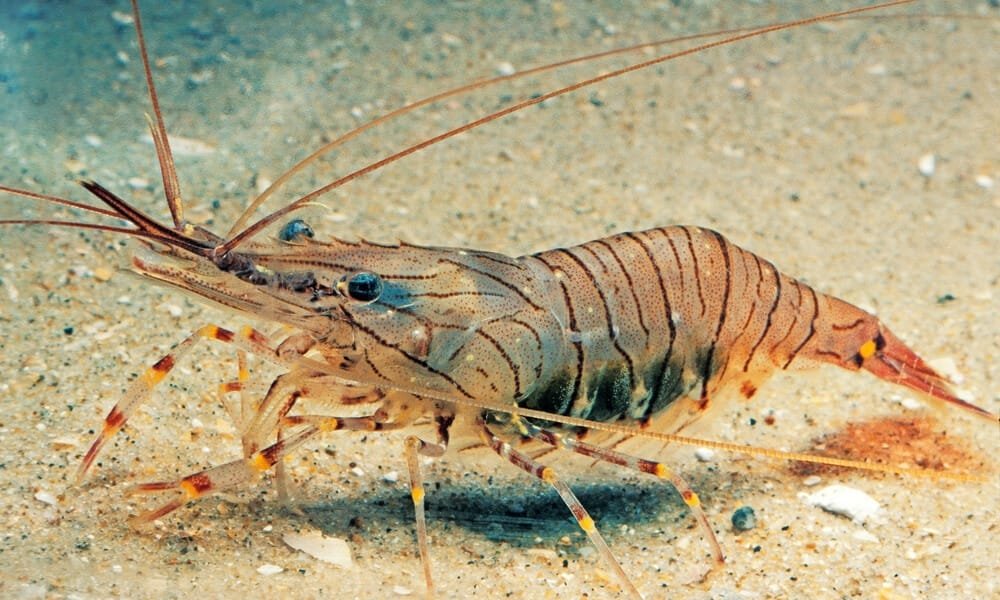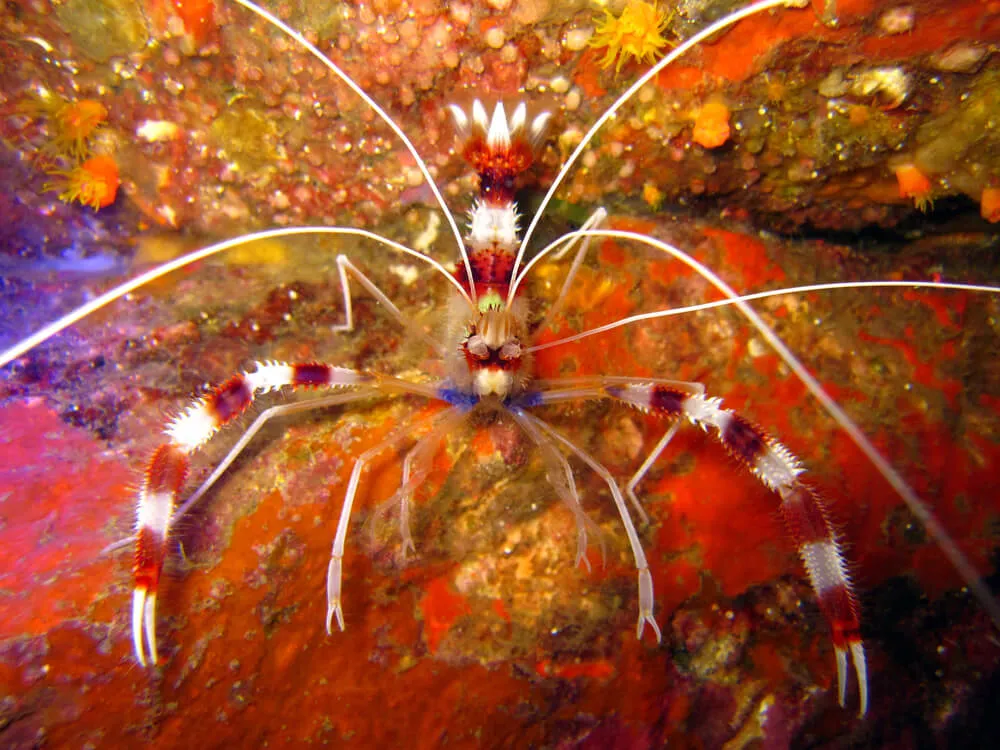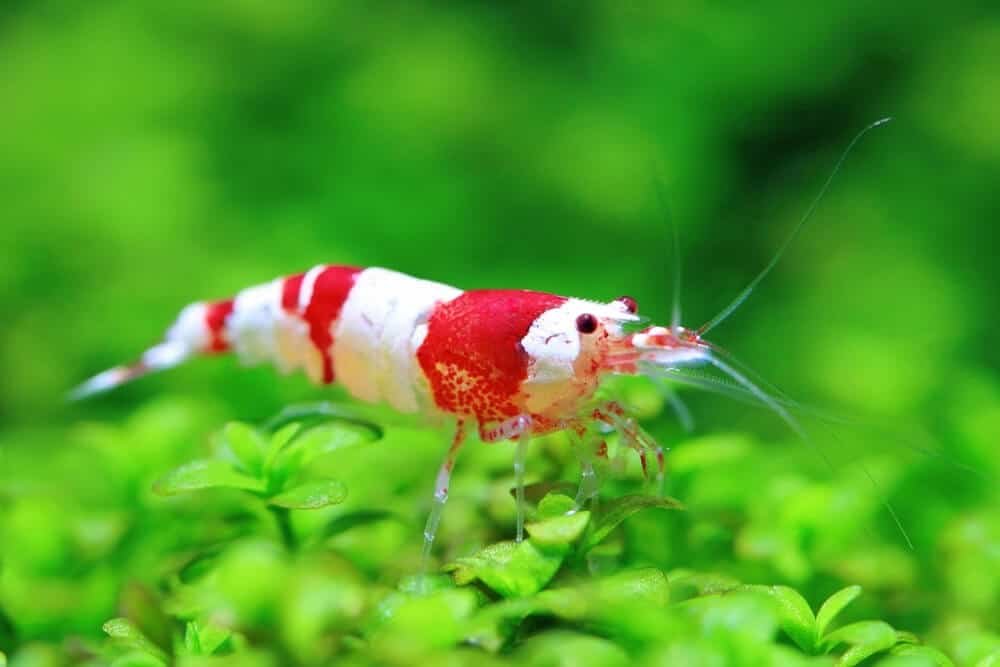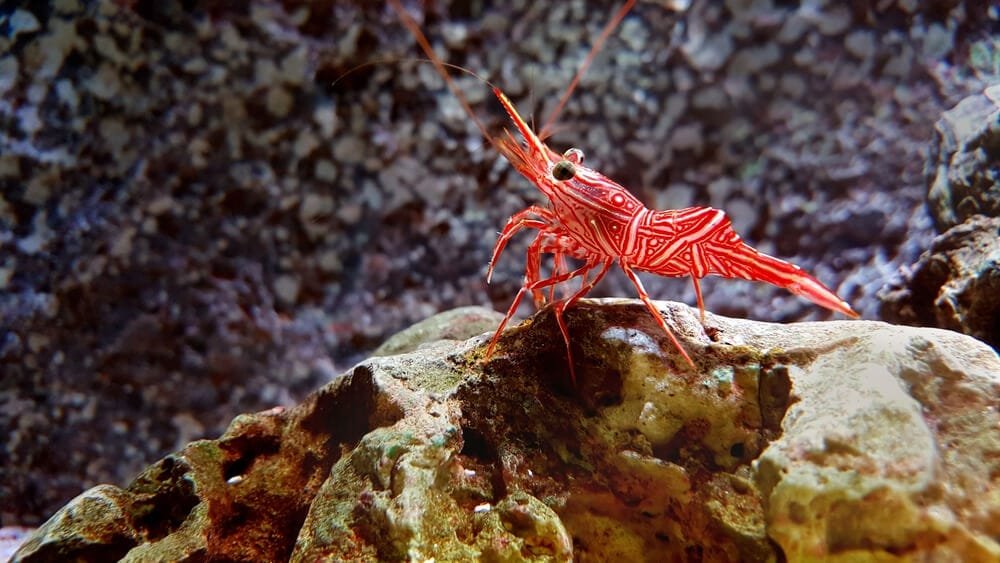Are you thinking of adding some aquatic creatures to your tank? Look no further than grass shrimp! These tiny, fascinating creatures make a great addition to any aquarium. In this ultimate grass shrimp care guide, we will cover everything you need to know to provide the best possible care for these delightful crustaceans. From setting up the perfect habitat to ensuring a balanced diet, we’ve got you covered. Get ready to dive into the world of grass shrimp care and create an environment where these little shrimps can thrive!
Overview of Grass Shrimp
Grass Shrimp, scientifically known as Palaemonetes spp., are small crustaceans commonly found in freshwater and estuarine habitats. Despite their name, grass shrimp are not true shrimp but are closely related to them. These fascinating creatures play an important role in aquatic ecosystems and have several unique characteristics that make them an interesting subject of study.
Physical Description
Size
Grass Shrimp are relatively small in size, typically measuring between 2 to 3 inches in length. However, their size can vary depending on the species and environmental factors. These tiny crustaceans have slender bodies and elongated tails, which enable them to move quickly through the water.
Coloration
The coloration of grass shrimp also varies, but they generally have a translucent or pale body with hints of green or brown. This coloration helps them blend into their natural surroundings, such as grasses and algae, providing them with camouflage from predators.
Body Structure
Grass shrimp have a unique body structure that sets them apart from other crustaceans. They have a segmented body, with a distinct head and thorax. Their head bears two pairs of antennae, one of which is longer and helps in sensory perception. They also possess three pairs of locomotive limbs called pereiopods, which aid in their movement and feeding.
Habitat and Distribution
Freshwater Habitats
Grass Shrimp are resilient creatures that can adapt to various freshwater environments, including rivers, streams, ponds, and lakes. They are often found in habitats with aquatic vegetation, as they provide them with food and shelter. These shrimp typically prefer shallow areas with slow-moving or stagnant water, where they can scavenge for food and avoid strong currents.
Estuarine Habitats
Apart from freshwater habitats, grass shrimp are also commonly found in estuarine environments. Estuaries are areas where freshwater and saltwater mix, creating a unique ecosystem with diverse species. Grass shrimp thrive in estuaries due to the abundance of food sources and the protection provided by salt marshes and tidal creeks.
Distribution
Grass shrimp have a wide distribution, with different species occurring in various parts of the world. They are particularly abundant in North America, where they are found along the East Coast, the Mississippi River basin, and the Gulf of Mexico. They can also be found in parts of Europe and Asia, depending on the species.
Life Cycle
Reproduction
Grass shrimp have a fascinating life cycle, which starts with the reproductive process. Breeding typically occurs during the warmer months, where females release their eggs into the water. Male grass shrimp then fertilize the eggs externally. The eggs are carried by the female in a specialized brood pouch until they hatch, which takes about one to two weeks.
Larval Stage
Once the eggs hatch, the larvae enter a pelagic stage. During this stage, the young shrimp are carried by currents and consume plankton as their primary food source. The larval stage can last for several weeks before the shrimp undergo metamorphosis and develop into juvenile grass shrimp.
Growth and Development
As the grass shrimp grow, they molt regularly, shedding their exoskeleton to accommodate their increasing size. Molting is a vulnerable period for grass shrimp, as they are temporarily soft-shelled and more susceptible to predation. However, molting also allows them to grow and regenerate any lost body parts.
Tank Setup
Choosing the right tank size
When setting up a tank for grass shrimps, it’s important to choose the right tank size to provide them with a comfortable living space. A tank with a capacity of at least 10 gallons is a good starting point for a small number of grass shrimps. However, if you plan on keeping a larger community or plan to breed them, a larger tank with a capacity of 20 gallons or more would be more suitable. Remember that overcrowding can lead to stress and poor water quality, so it’s essential to provide enough space for your shrimps to thrive.
Setting up the water conditions
Creating the right water conditions is crucial for the health and well-being of your grass shrimps. They thrive in slightly alkaline water with a pH level ranging from 7.2 to 8.0. To achieve this, you can add crushed coral or limestone rocks to your tank, as they help maintain a stable pH. Additionally, it’s important to use a reliable water conditioner to remove any chlorine or chloramines from tap water before adding it to the tank. This helps ensure that the water is safe and suitable for your shrimps.
Selecting appropriate substrate and decorations
Choosing the right substrate and decorations for your grass shrimp tank not only adds aesthetic appeal but also creates a natural and stimulating environment for them. Opt for a fine-grained substrate, such as sand or gravel, as it allows the shrimps to dig and forage comfortably. Adding live plants, such as Java moss or Anubias, not only enhances the visual appeal of the tank but also provides the shrimps with hiding spots and a natural food source. Additionally, consider adding driftwood or rocks to create caves and crevices, which help create a sense of security for your grass shrimps.
Water Parameters
Maintaining temperature and pH levels
Consistently maintaining the appropriate temperature and pH levels in your grass shrimp tank is crucial for their overall health and well-being. The optimal temperature for grass shrimps ranges from 68°F to 78°F. It’s important to use a reliable aquarium heater to maintain a stable temperature within this range. Regularly monitoring the pH levels and keeping it within the recommended range of 7.2 to 8.0 is also essential. Fluctuations in temperature and pH can cause stress and even lead to health issues for your shrimps.
Monitoring ammonia and nitrate levels
Regular monitoring of ammonia and nitrate levels is essential for the health of your grass shrimps. High levels of ammonia can be toxic, negatively impacting the shrimps’ health and potentially leading to fatalities. Nitrate levels, on the other hand, can indicate poor water quality and inadequate filtration. Implementing a reliable testing schedule and using appropriate water test kits to monitor ammonia and nitrate levels is crucial. If detected, taking prompt action by performing water changes or improving filtration is necessary to maintain a healthy environment for your shrimps.
Providing clean and filtered water
Maintaining clean and filtered water is vital for the well-being of your grass shrimps. A good filtration system helps to remove debris and waste, ensuring water quality remains optimal. Choosing an efficient filter that provides mechanical, chemical, and biological filtration is essential. Regularly cleaning the filter media and replacing it as needed is crucial to ensure it operates at its best. Water changes are also necessary to remove accumulated toxins and maintain water quality. Aim to change approximately 10-20% of the water every week to keep it clean and ensure the health and longevity of your grass shrimps.
Feeding
Understanding the dietary needs of grass shrimps
To keep your grass shrimps healthy and thriving, it’s essential to understand their dietary needs. They are primarily scavengers and omnivores, feeding on algae, biofilm, decaying plant matter, and small invertebrates. While they may find some food sources within the tank, it’s important to supplement their diet with high-quality shrimp-specific food. Look for pellets or flakes that are specifically formulated for shrimps. These foods often contain essential nutrients and minerals that contribute to their overall health. It’s also beneficial to provide them with a variety of foods to ensure a balanced diet.
Feeding frequency and portion sizes
When it comes to feeding your grass shrimps, it’s important to strike the right balance. Feed them small amounts of food once or twice a day, as overfeeding can lead to poor water quality and other health issues. Start by offering a small pinch of food and observe their feeding behavior. Once they have finished eating, you can provide more if needed. It’s important to remove any uneaten food within a few hours to prevent it from decomposing and polluting the water. Adjust the portion sizes accordingly based on their appetite and the amount of food they consume.
Offering a variety of food options
To ensure your grass shrimps receive a well-rounded diet, it’s beneficial to offer them a variety of food options. Along with shrimp-specific pellets or flakes, consider introducing other food sources such as blanched vegetables like zucchini or spinach. These can be cut into small pieces and gently boiled before being added to the tank. Additionally, you can supplement their diet with specialized frozen or freeze-dried foods designed for shrimps, such as daphnia or brine shrimp. Offering a diverse range of food options not only provides essential nutrients but also keeps their diet interesting and stimulates natural foraging behaviors.
Compatibility
Researching tankmates for grass shrimps
When considering tankmates for your grass shrimps, it’s important to do thorough research. While grass shrimps are generally peaceful and non-aggressive, not all tankmates are suitable for them. Small, peaceful fish like endlers or guppies can be compatible as long as the tank size is appropriate. However, it’s crucial to avoid aggressive or territorial fish species that may harass or prey on the shrimps. Additionally, it’s important to consider the compatibility of other invertebrates in the tank, such as snails or dwarf shrimp, to ensure a harmonious and balanced ecosystem.
Avoiding aggressive or larger species
To maintain a harmonious tank environment for your grass shrimps, it’s advisable to avoid aggressive or larger species. Some fish species, such as bettas or cichlids, have a tendency to be aggressive towards shrimps and may view them as prey. It’s essential to consider the temperament and behavior of any potential tankmate before introducing them to the tank. Additionally, larger fish that require ample swimming space may not be suitable for a tank with grass shrimps, as they can cause stress or disrupt the shrimps’ natural behavior.
Creating a balanced ecosystem
When selecting tankmates for your grass shrimps, it’s important to create a balanced ecosystem. Consider the needs of the shrimps, their chosen hiding spots, and their natural behaviors when choosing tankmates. Ideally, aim for fish and invertebrates that occupy different areas of the tank, both vertically and horizontally, to reduce competition for resources and space. Providing sufficient hiding spots and ample swimming space for your shrimps and tankmates helps create a stress-free environment and promotes a harmonious coexistence.
Behavior and Socialization
Observing natural behaviors of grass shrimps
One of the joys of keeping grass shrimps is observing their fascinating natural behaviors. From their constant grazing on algae and biofilm to their enthusiastic exploration of their tank, these shrimps have interesting characteristics. Take the time to observe their behaviors, noting their preferred hiding spots, feeding patterns, and social interactions. This not only enhances your understanding of their needs but also allows you to appreciate their unique personalities and natural instincts.
Creating hiding spots and shelters
Providing hiding spots and shelters is crucial for the well-being of your grass shrimps. These shrimps value their privacy and feel secure in areas where they can retreat from potential threats or tankmates. Consider adding plants, driftwood, or rocks to create caves, crevices, and other hiding spots. Live plants not only serve as hiding places but also provide a natural food source and aid in maintaining water quality. Creating a varied and intricate habitat with plenty of hiding spots ensures that your grass shrimps feel safe and can display their natural behaviors.
Promoting social interaction
Although grass shrimps are generally peaceful, they do engage in social interactions with their kind. It’s important to maintain a suitable population size within the tank to allow for natural socialization. By keeping a small group of shrimps together, they can engage in courtship, mating, and overall group dynamics. To promote social interaction, provide open areas where the shrimps can gather and display their fascinating behaviors. Creating a stimulating and enriching environment encourages the shrimps to thrive and leads to a more fulfilling and engaging experience for both you and your shrimps.
Breeding
Providing optimal conditions for mating
If you’re interested in breeding your grass shrimps, providing optimal conditions is key. Ensure that the tank water parameters are within the recommended range, including temperature, pH, and water quality. Add multiple hiding spots and shelters to give the shrimps a choice of desirable breeding areas. Additionally, it’s important to offer a varied and nutrient-rich diet to support the reproductive health of the shrimps. By maintaining these optimal conditions, you increase the chances of successful mating and the growth of a healthy shrimp population.
Identifying male and female grass shrimps
To successfully breed grass shrimps, it’s important to be able to identify males and females. Female grass shrimps are typically larger and broader, while males are more slender and smaller in size. Another distinguishing feature is the saddle or berried spot on the female’s back, which indicates that she is carrying eggs. Observing their behavior during courtship can also give clues as to their gender. Males often display more vigorous movements and chase females during breeding rituals. Familiarize yourself with the physical characteristics and behaviors of male and female shrimps to facilitate successful breeding.
Caring for eggs and newborn shrimps
Once your female grass shrimp has laid eggs, it’s important to provide appropriate care to ensure their development and survival. Ensure that water conditions remain stable and within the recommended parameters. It’s important to avoid sudden fluctuations in temperature or pH, as this can harm the developing eggs. Protect the eggs from being consumed by other tankmates by providing densely planted areas or a separate breeding tank. The eggs will hatch into miniature shrimp, known as fry, after approximately 20 days. Offer a variety of small, nutritious foods to support the growth and development of the newborn shrimps as they transition into adulthood.
Health and Disease
Recognizing common illnesses and symptoms
As with any living organism, grass shrimps are susceptible to certain illnesses and diseases. It’s important to be vigilant and recognize the common signs and symptoms of illness in order to address them promptly. Symptoms of distress or illness may include lethargy, loss of appetite, discoloration, unusual swimming patterns, or changes in behavior. These can be indicative of diseases such as bacterial infections, parasitic infestations, or water quality issues. Regularly observe your grass shrimps and monitor their behavior to spot any deviations from their normal state of health.
Implementing preventative measures
Prevention is key when it comes to the health of your grass shrimps. Maintaining optimal water conditions, including temperature, pH, and cleanliness, is crucial for preventing illnesses. Regular water testing, scheduled water changes, and proper filtration help maintain water quality. Avoid introducing potentially harmful substances or contaminants into the tank, such as medications or untreated tap water. Quarantine any new tankmates before introducing them to ensure they are free from diseases or parasites that could harm your shrimps. By implementing these preventative measures, you can minimize the risk of illnesses and maintain a healthy environment for your grass shrimps.
Seeking appropriate veterinary care
If you notice signs of illness or suspect that your grass shrimps may be unwell, it’s important to seek appropriate veterinary care. Consult a veterinarian experienced in aquatic species or reach out to specialized shrimp forums or groups for advice from experienced keepers. Provide detailed information about your tank setup, water parameters, and the observed symptoms to help the veterinarian diagnose and treat the issue effectively. Timely intervention and proper care can greatly improve the chances of a successful recovery for your shrimps.
Tank Maintenance
Regular water testing and changes
Regular testing of water parameters is vital for maintaining a healthy environment for your grass shrimps. Test the water regularly, at least once a week, to monitor pH, ammonia, nitrite, and nitrate levels. This allows you to detect any imbalances or issues that may arise and take appropriate measures. Regular water changes are also essential to remove accumulated toxins, replenish essential nutrients, and ensure overall water quality. Aim to change approximately 10-20% of the water volume every week, ensuring that the new water is properly conditioned and matches the temperature and pH of the tank.
Cleaning filters and equipment
Proper maintenance of the filtration system is crucial for the well-being of your grass shrimps. Regularly clean the filter media, such as sponges or cartridges, as recommended by the manufacturer. Rinse them gently in tank water to remove debris, but avoid using tap water, as it may contain chlorine or other harmful chemicals. Additionally, clean any equipment, such as heaters or air pumps, as needed. Be cautious while cleaning to avoid causing stress to the shrimps or disrupting the tank environment. Regular maintenance and cleaning ensure that the equipment operates efficiently and contributes to the overall health of your grass shrimps.
Maintaining a clean and healthy environment
To maintain a clean and healthy environment for your grass shrimps, it’s important to perform regular tank maintenance and upkeep. Remove any uneaten food, organic waste, or debris that may accumulate in the tank. Gently vacuum the substrate during water changes to remove excess waste or plant debris. Inspect the tank for any signs of algae growth and remove it if it becomes excessive, as it can disrupt the water parameters. Maintaining appropriate lighting duration can help regulate algae growth. By maintaining a clean and healthy environment, you provide the best possible conditions for your grass shrimps to thrive.
Handling and Acclimation
Gentle handling techniques
When handling your grass shrimps, it’s essential to use gentle techniques to avoid causing harm or stress. Shrimps are delicate creatures, and rough handling can lead to injuries or even death. When necessary, use a net designed specifically for shrimps to gently scoop them up, ensuring that the net is free from any sharp edges or snags. Avoid squeezing or grabbing them tightly, as this can damage their exoskeleton or appendages. Always handle them with clean, wet hands to prevent the transfer of contaminants or chemicals onto their sensitive bodies.
Proper acclimation during introduction
Before introducing grass shrimps to a new environment, it’s crucial to acclimate them properly. The acclimation process helps them adjust to the new water conditions and minimize stress. Begin by floating the bag containing the shrimps in the tank for around 20-30 minutes to ensure that the temperature inside the bag matches that of the tank. Then, add small amounts of tank water to the bag every 10-15 minutes over the course of an hour. This gradual transition allows the shrimps to adjust to the water parameters safely. Lastly, gently release the shrimps into the tank, taking care not to introduce any water from the bag.
Minimizing stress for the shrimps
Stress can significantly impact the health and well-being of your grass shrimps. To minimize stress, it’s important to provide them with a calm and stable environment. Avoid sudden changes in water conditions, such as temperature or pH, which can create stress and lead to health issues. Minimize disturbances in the tank, such as loud noises or sudden movements, that could startle or disturb the shrimps. Be mindful when introducing new tankmates, as aggressive or territorial species can cause stress and even harm the shrimps. By creating a stress-free environment, you allow your grass shrimps to thrive and exhibit their natural behaviors.
Tips for Success
Researching and learning about grass shrimps
To ensure the success of your grass shrimp keeping venture, take the time to research and learn as much as possible about these fascinating creatures. Understand their natural habitat, dietary needs, behavior, and tank requirements. Familiarize yourself with the various species and their unique characteristics. By gaining knowledge and staying informed, you can make informed decisions regarding tank setup, feeding, and overall care, ultimately leading to a rewarding experience for both you and your grass shrimps.
Being patient and observant
Grass shrimp keeping requires patience and careful observation. Allow your shrimps time to acclimate to their new environment and establish their territory. Observe their behavior, feeding patterns, and interaction with tankmates. By being patient and attentive, you can detect any signs of distress or illness early on and take prompt action. Recognize that shrimps have their own unique personalities and behaviors, and they may not always conform to a strict schedule. Embrace the process of learning and enjoy the journey alongside your shrimps.
Seeking advice from experienced keepers
When starting your journey with grass shrimps, it’s beneficial to seek advice from experienced keepers or join online forums and communities dedicated to shrimp keeping. Engage with fellow shrimp enthusiasts, ask questions, and share your experiences. Experienced keepers can offer valuable insights, troubleshooting tips, and recommendations based on their own experiences. Sharing knowledge and interacting with the shrimp-keeping community enhances your understanding and allows you to navigate any challenges more effectively.
Summary
Successful grass shrimp care requires careful attention to their tank setup, water parameters, feeding, compatibility with tankmates, behavior and socialization, breeding, health and disease prevention, tank maintenance, and proper handling and acclimation. By following these guidelines and tips, you can create an optimal environment for your grass shrimps to thrive, leading to a rewarding and fulfilling experience as a keeper. Remember to approach the care of your grass shrimps with a friendly and patient mindset, and reach out to experienced keepers for support and guidance along the way.







